1. I’m Glad My Mom Died by Jennette McCurdy
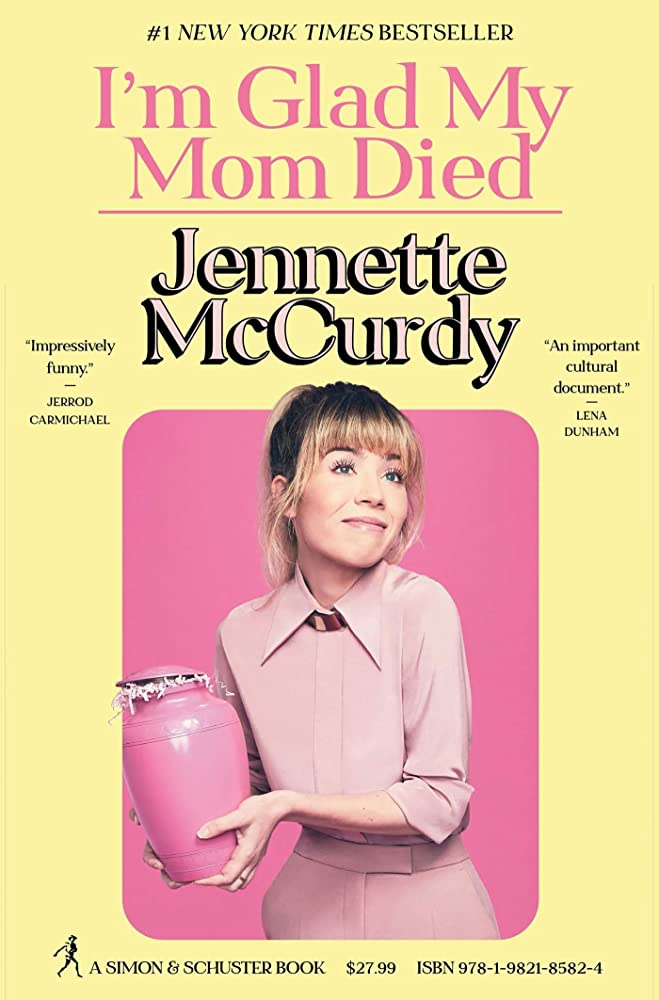
Like most people, I got this book because I watched a lot of Nickelodeon sitcoms as a kid (including iCarly) and wanted to get the behind the scenes dirt coming from one of the show’s stars. I’ll tell you right now that Nickelodeon stuff only takes up maybe 5% of the book, and it’s really not anything juicer than what you’ve already heard.
But despite that I really liked this book! What it’s really about it Jenette McCurdy’s life of being pushed into stardom by her emotionally abusive mother (gee, the title gave it away, didn’t it?). She goes into detail about her home life, her membership in the Morman church, the eating disorder given to her by her mother, and her decision to take a step back from show business.
You can tell that some parts of the story were massaged to conform more into a dramatic narrative, but it’s not egregious enough to really bother me.
2. Universal Harvester by John Darnielle
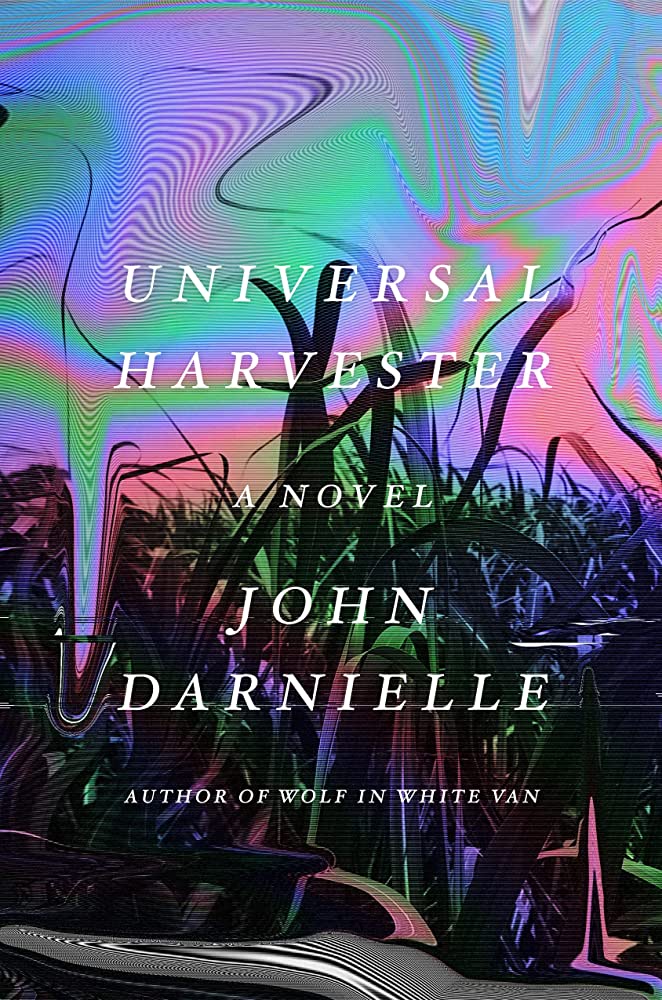
I read John Darnielle’s previous book Wolf in White Van and liked it quite a bit. But this one’s a disappointment. It’s about a young man who works at a video rental store when some of the tapes start coming back with mysterious and creepy videos recorded over them. This was (and still is in some places) advertised as a horror story, but it really isn’t. There’s parts of it that do feel creepy and foreboding, but it never comes to any real head. Kind of like the video game Gone Home.
This book has too much ambiguity for its own good. We barely even get to see what’s on the tapes so when I read descriptions of characters sick to their stomach and unable to sleep after what they saw, it doesn’t work like movie logic of not showing the monster. It just makes me feel like I accidentally skipped a page. None of the loose threads are really tied up in this book. Everything they set up fizzles out.
I will say though that this book has kind of a mix of first and third person narration that I’m curious to experiment with in my own writing.
3. The Auctioneer by Joan Samson
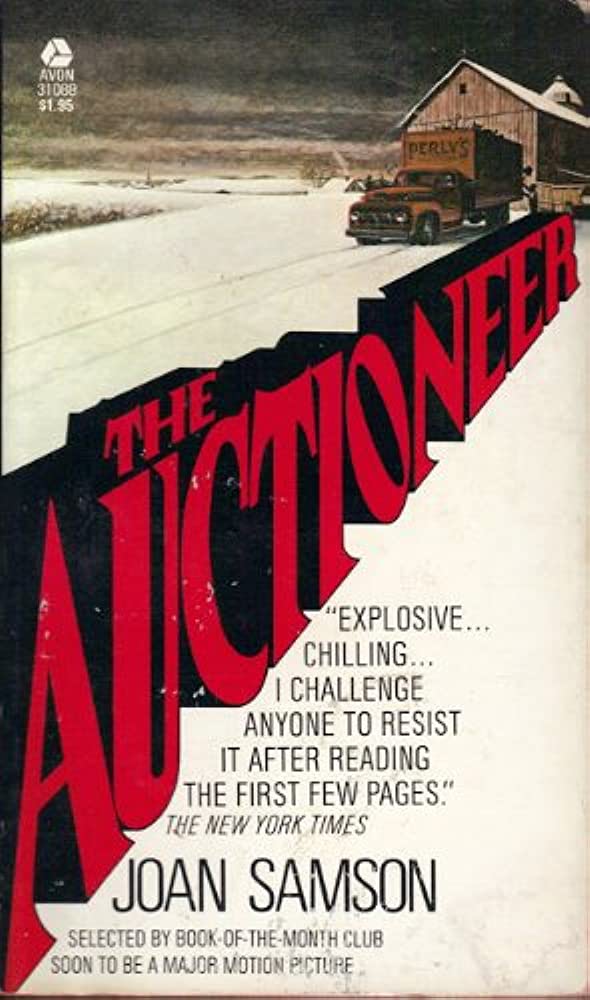
The plot of this book is that a mysterious auctioneer moves into a small town and gradually takes control over it by intimidating its residents into “donating” items for him to sell. But this book is about a lot of things. Gentrification. The commodification of “old-fashioned small town values.” The dangers of over-policing.
The mood for this book is excruciatingly slow dread. It creates the feeling of an inevitable disaster that you can’t escape from even though you can plainly see it creeping towards you from miles away.
A really interesting part of this book is how “old-timey” the setting feels even though it takes place in the 1970s. The town and characters are written in a way where you could easily mistake the time for the early 20th century. But then there’s the infrequent slap in the face when someone mentions the Vietnam War or something. This does a good job of reinforcing the themes of this story, going along with the villain’s marketing ploy of attracting new buyers to the town by selling the idea of an idyllic old world retreat from the horrors of modernity.
4. When Darkness Loves Us by Elizabeth Engstrom
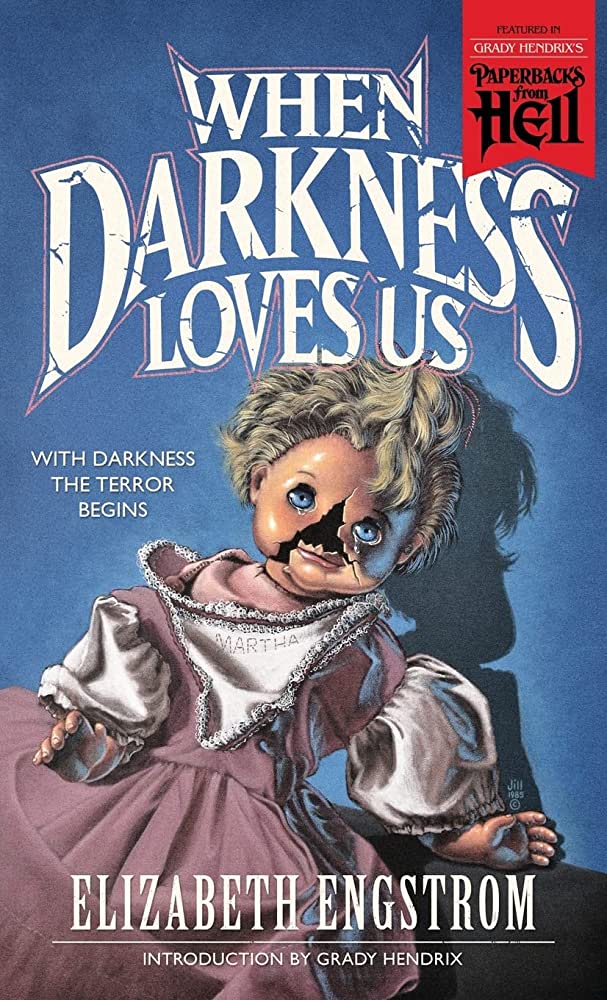
I learned about this book from reading Paperbacks from Hell last year and I’m very satisfied with the suggestion. This book is a bundling of two novellas by Engstrom. The first is “When Darkness Loves Us,” where a pregnant woman, Sally Ann, is accidentally trapped in an underground cave system for years before managing to escape. The second story, “Beauty is…” is about a middle-aged mentally disabled woman named Martha regaining her faculties as she both discovers love and is the victim of horrific attacks.
“When Darkness Loves Us” reads like a tragic urban legend. The tragedy is what really makes this story cut deep. The protagonist’s family are very nice people who have done nothing to wrong her, which makes it hurt more to see the anguish in the relationship between them and Sally Ann. How the miracle of Sally Ann finding her way out of the caves is twisted into a curse by how much she’s been changed while she was down there.
“Beauty is…” shows how a bleak, depressing, violent story can go much farther when that’s not all there is to it. Much of this book shows the love and compassion the townsfolk have for Martha. Knowing how badly disabled people are often treated in real life, it’s extremely heartwarming and even inspiring to be given deep detail into how pretty much the entire town has taken the role of being her caretaker. And then to see her gradually become more capable and independent as she progresses in a loving relationship takes the warm feeling even further. All of this warm and fuzzy stuff about the kindness in humanity makes the parts of the story where the petty, hateful, violent parts of humanity even more powerful.
5. The Pervert by Michelle Perez and Remy Boydell
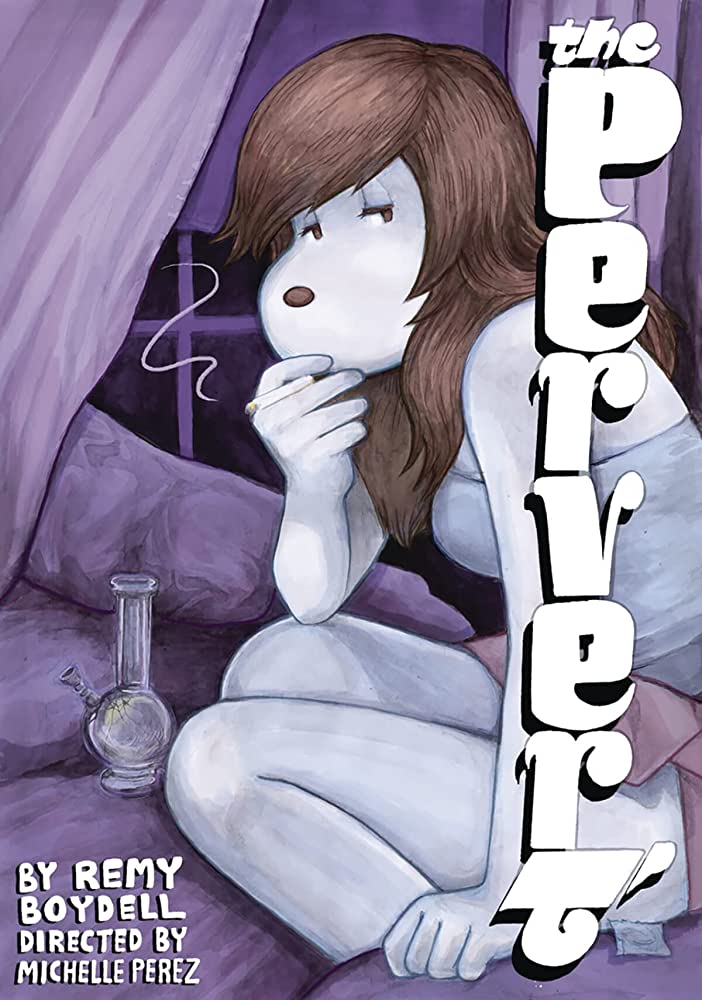
The Pervert is a story about a trans woman trying to survive in Seattle as a sex worker. I really like Michelle Perez’s watercolor furry painting style for this book. And the six-panel structure does a good job of portioning the story into little episodes of the characters’ lives. I also like that randomly characters like Clifford the Big Red Dog or that meme cat from Top Cat show up.
The writing does a good job in delivering this really emotional story, and it’s also pretty funny. My favorite joke:
“No, no Tom. I’m a transsexual.”
“You can fly?”
“God, damn it, Tom.”
6. Fledgling by Octavia Butler
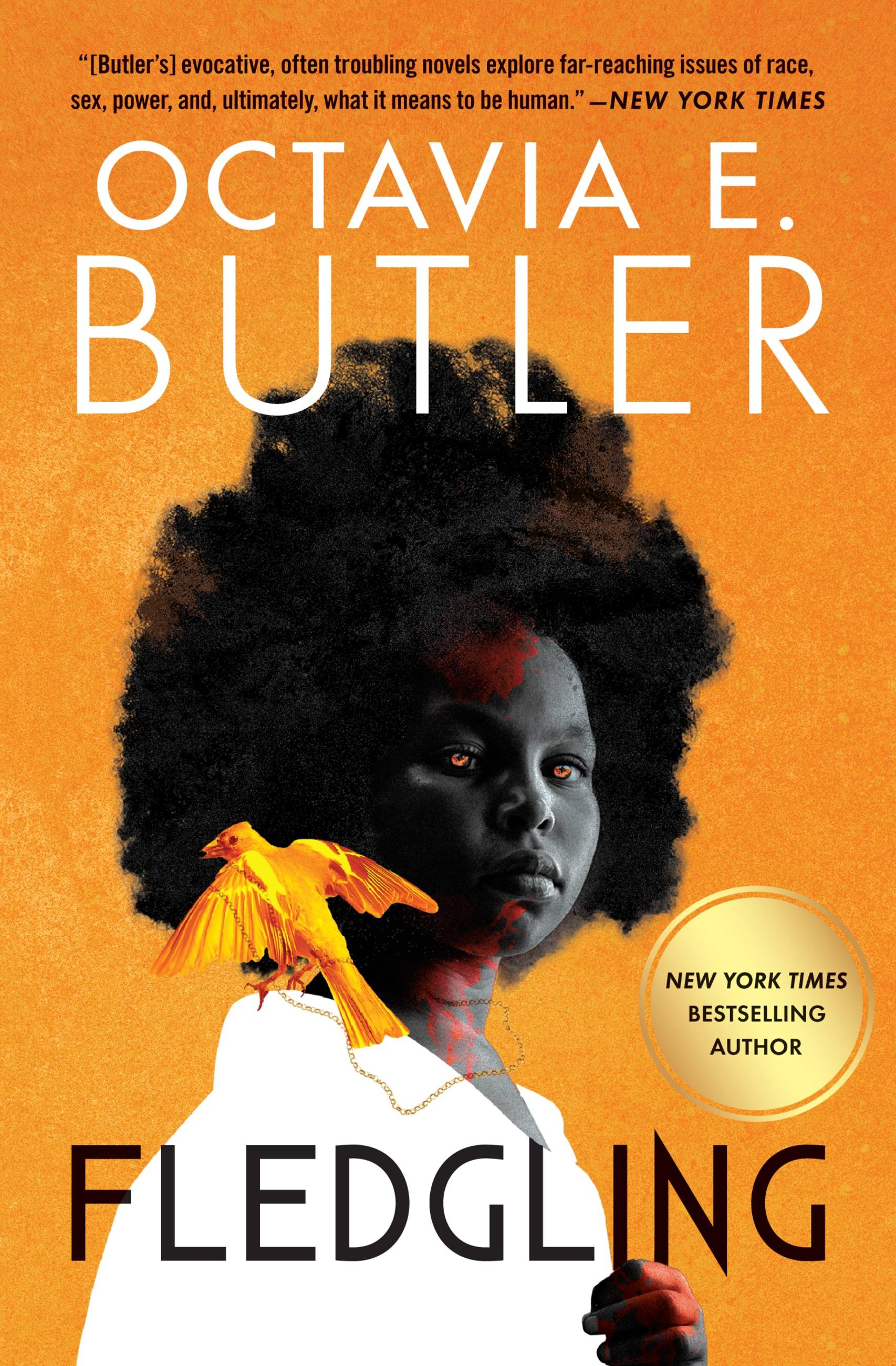
This is the eighth book I’ve read by Octavia Butler (previous ones being Kindred, Parable of the Sower/Talents, The Lillith’s Brood trilogy and Unexpected Stories) and it’s the first one that I’ve disliked. Fledgling is about a vampire girl named Shori waking up with amnesia and having to find and punish the people who murdered her family and razed their homes.
I’ll be blunt. This book has 10,000 year old vampire loli sex in chapter 2. Octavia Butler anime fan confirmed. But anyway, this puts a whole weird haze over the entire book that really wasn’t worth it. Shortly before I read this book I played the visual novel Song of Saya which kind of has similarities with this relationship dynamic of Fledgling. But I liked it in Song of Saya because the way it was done there was to show the total moral decay of someone who has been completely broken by being alienated by solitude in a disgusting, alien, violent world.
I’ve seen people argue that the reason the main character has the body of a 10 year old while having sex with a bunch of adults is Butler trying to present subverted power dynamics (a grown white man in a relationship with what appears to be a young black girl, but actually she’s the one with all the power) but even if that’s it, it just really doesn’t do anything compelling that makes it worth it.
But honestly that’s the least of my problems with the book. That’s pretty much the only part that isn’t boring. Nearly all of the dialog in this book is exposition or forcefully moving the plot from point A to point B. Characters feel like they have barely any personality because all of their actions and motivations are dictated by either biological destiny or logic to move the plot forward.
Shori collects a bunch of humans who become part of her family through biting and drinking blood. We’re told about for Shori’s species, the bonds between the vampires and their humans are so powerful that the grief of losing each other can be debilitating. Shori happens to lose one of her humans, but I really couldn’t be bothered to care since the story doesn’t really give me much emotionally to latch onto except that they’re biologically and emotionally codependent on each other.
There were a couple of big action scenes in the first half of the book but after they discover who the culprits are and set up the trial, it takes until almost the very end for anything exciting to happen again. We know pretty early on who’s responsible for killing Shori’s family, why they did it and how. In the second half of the book there’s no mystery and no compelling twists and turns.
7. The Watsons Go to Birmingham by Christopher Paul Curtis
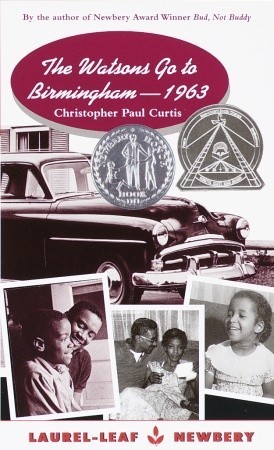
I first read this book in the third grade and was surprised how much of it has been burnt into my brain for the last almost 20 years. Byron getting his lips frozen to the car window. Kenny playing “Yakety Yak” so much everyone was sick of it. Rest stop Kool-Aid tasting like metal. The Wool Pooh. It says a lot about Christopher Paul Curtis’ writing that that much could stick with me for all these years after a single read.
This book does a great job of writing the Watsons and making them people we want to spend the book with. My favorite is the dad, who, by the way he’s written, you can tell exactly why his wife would want to marry him. I also love how he gets the very specific kind of logic in the lies little kids make up and tell each other. Like the part where Byron tells his younger siblings that there are secret garbage trucks that collect the frozen corpses of people with “thin blood” from warmer parts of the country who get caught out in cold Michigan weather.
This is a book that I’m definitely going to put on my future child’s book shelf. I think I’ll reread Bud, Not Buddy by the same author sometime this year.
8. Black Panther: The Revolutionary Art of Emory Douglass
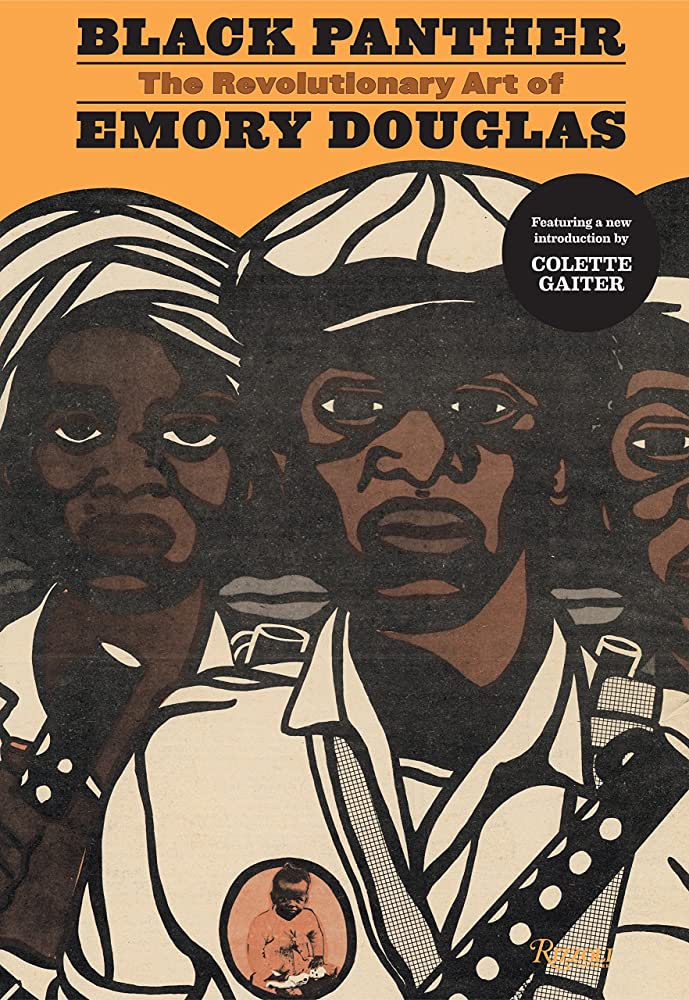
I found this book browsing through the library looking for nothing in particular. And I guess it was a pretty lucky find because apparently this book is rare.
This book explores the work and history of Emory Douglass, the Black Panther Party’s Minister of Culture and the visionary behind the party’s newspaper and overall media aesthetic. It shows how Emory’s art expressed the ideals of the Black Panthers, and how they evolved from a more narrow focus on violent militant resistance to a broader focus on radical mutual aid.
I really liked this book and wish that copies of it weren’t selling for like $800 so I could get one for myself.
9. Angela Davis: An Autobiography by Angela Davis
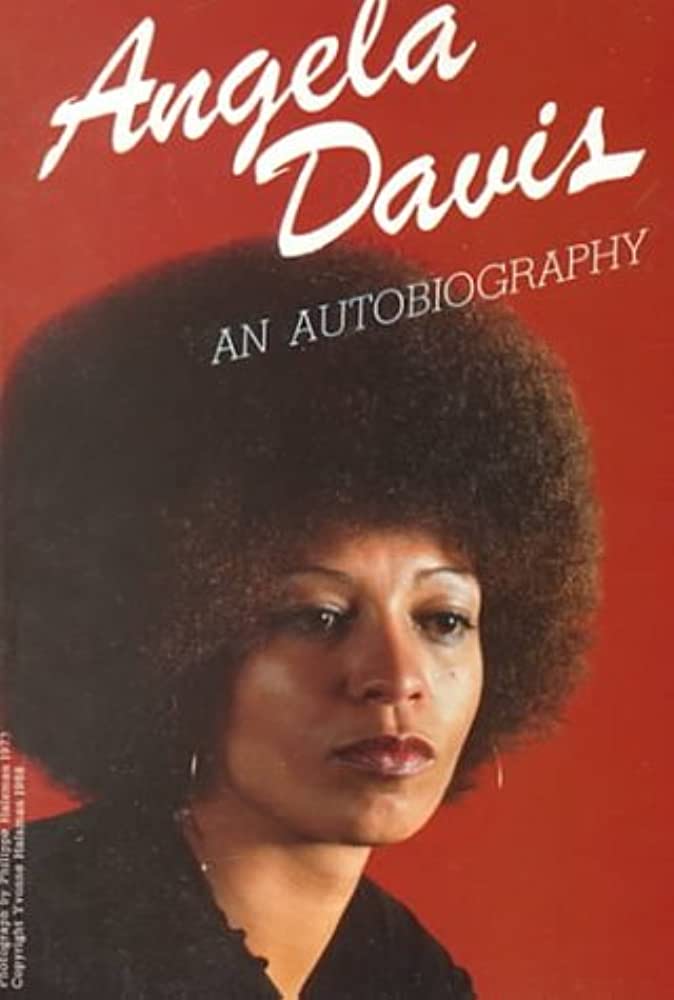
This is an interesting autobiography that goes through Angela Davis’ life starting as a child and ending shortly after she was found not-guilty after being framed for murder. She goes into detail on her international political education, the harassment by police and government officials, her time in jail, and her infamous trial.
This book is very educational in the tactics that the government uses to suppress activists and the ways they can be resisted. The part that has stuck in my mind most is Angela Davis’ assessment that the men who were trained to counter insurgency in Vietnam were brought home to do the same thing in America, using our cities as their battlegrounds.
10. Brown Girl in the Ring by Nalo Hopkinson
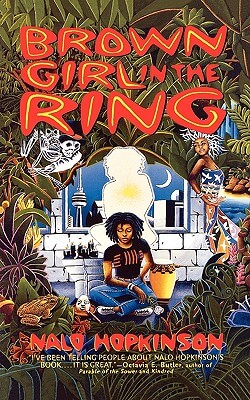
Brown Girl in the Ring is a pretty unique dystopia taking place in a future Toronto. It shows us a version of the city where the government has completely divested from it, leaving residents to fend for themselves. But not fend for themselves in a Mad Max way. Everyday life still goes on but instead of a murder desert free for all, it operates more like a very poor country. Life still goes on and people acclimate to a life without major utilities or access to modern medicine.
The book has a magical element to it, as the protagonist Mi’Jeanne and her family are “seer women” who can interact with spirits from Caribbean folklore. The folklore is really interesting and I’d like to read more books with it. Hopkinson uses authentic Caribbean vernacular in a way similar to Nora Zeale Hurston used black southern vernacular in her books, which took a while to get used to but added to this story’s unique identity.
11. Convenience Store Woman by Sayaka Murata

I found this book going through a Goodreads rabbit hole looking for more Japanese literature. I really like this one. I feel like this belongs in the same canon as stuff like Welcome to the NHK and No Longer Human, and is probably going to occupy a similar permanent apartment in my brain like NHK.
It’s about a woman, probably autistic, who after finding herself in deep trouble multiple times as a child for misreading social cues, resigned herself to just mimic other people and do as she was told. She ends up working as a convenience store clerk for 18 years. Her job is almost her entire life, and she’s perfectly content in it until the pressure to appear “normal” begin to force her to change.
The parts of the story where she describes how quickly and harshly people’s opinions on a person can shift the instant they detect something “abnormal” about them. The relationship the protagonist feels with her job is very complicated and gives me lots of conflicting feelings. The best way I can describe this book is if you extrapolated the Vewn short film “pizza movie” into a whole book.
12. Understanding Comics by Scott McCloud
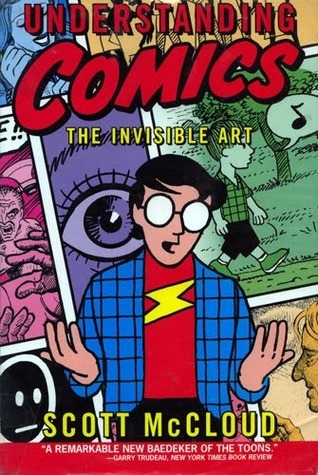
I first got a look at this when an excerpt was included in an English textbook when I was a little kid. Now I’ve read the whole thing. Understanding Comics examines what exactly a comic is, and goes over all the unique ways the medium communicates. What this book really is is a book on art theory. McCloud does a good job of making his ideas easy to understand, but this is still a book that demands you to put in some work yourself.
I was pleasantly surprised to find out that even though this book was written decades ago when anime and manga were a tiny fraction as popular in America as they are now, he has a very insightful and accurate theory on the actual differences between American comics and manga. And again, this was written years before countless American cartoons showed their asses with parodies of DBZ and Pokémon that showed they couldn’t engage with Japanese art beyond “woah it’s weird and flashy and weird and Asian!”
This is a book I plan on buying for my personal collection and keeping as a reference that I’ll refer to repeatedly over the years.
13. The Slob by Aron Beauregard
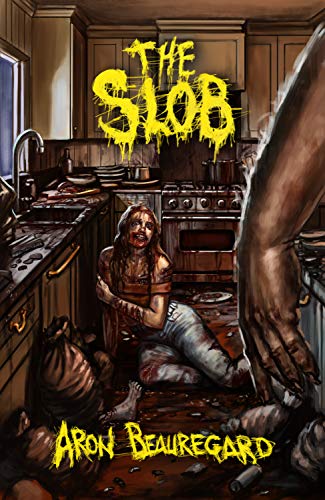
It’s a story about a woman getting held prisoner by a really gross guy.
I’ll level with you. If you’ve ever asked for a trigger warning in your life, skip this book. Me, on the other hand, I like super messed up fiction. And on that front, this book gave me what I was looking for and then some. If you’re looking for something to make you sick then you should read it. I won’t go into more detail than that. It’s something you just gotta experience.
The last chapter of the book was really weird though. It went into how all the events in the story were actually part of an elaborate conspiracy of elites to create a market for human meat. But nothing about The Slob or his operation fits in with this high class secret rich people conspiracy. It makes no sense that for their plans this is the kind of guy they go to, and that they find the type of “product” he creates is acceptable. They could’ve just chopped off the end, but there’s a sequel to this book so I’m guessing this stuff is gonna show up later. I’ll find out when I get around to reading Son of the Slob.
14. Negroes With Guns by Robert F. Franklin
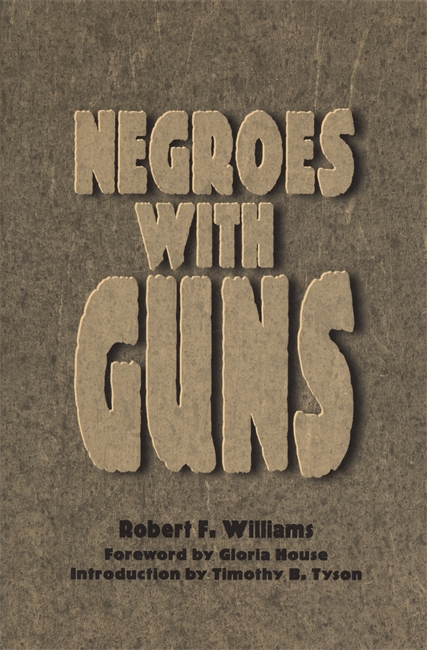
This is a book written by the former president of the NAACP chapter of Monroe, NC. Franklin’s thesis is that through armed self-defense, the criminal justice system can be coerced into behaving fairly. He argues that a society that considers white people superior to black people would rather not trade the blood of whites for the blood of blacks. The police and courts are more likely to intervene in cases of white on black violence if the alternative is white people being killed by black people who defend themselves with deadly force in the absence of protection from the state.
He talks about how he trained members of his community in armed self defense, had shootouts with the KKK and managed to prevent lynchings and pogroms. This book was very illuminating on the value of community armed self defense.
15. Exquisite Corpse by Pénélope Bagieu
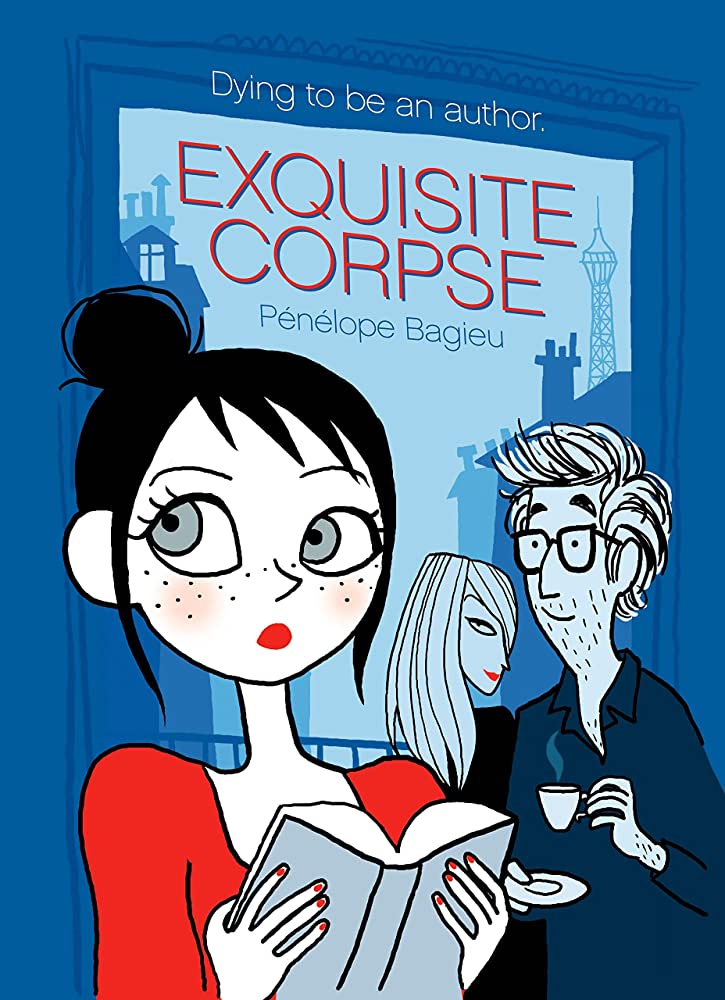
This is a nice little comic about an airheaded booth babe who gets into a relationship with a reclusive writer. I really like the art style, including the colors. It’s very French, is the best way I can describe it.
There’s nothing particularly deep, but it’s still a nice little story. I’d like to read more of the author’s stuff, but it looks like all the rest of it’s in French.
16. Penpal by Dathan Auerbach
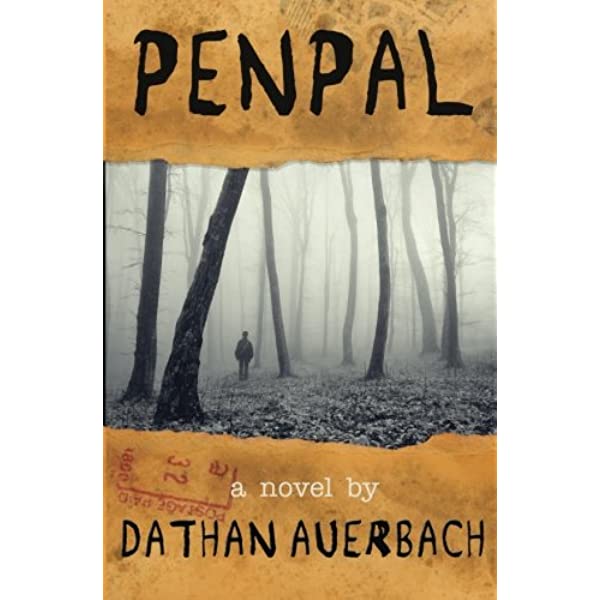
After years of hearing that this book was the result of creepypasta busting through to the more mainstream plane, I finally read it. And I liked it!
It’s a story where the narrator reconstructs memories from his childhood about a grown man stalking him from the time he was in Kindergarten to his teens. It definitely does read like a creepypasta. I can’t fully articulate why, but I mean that in a good way. To try to explain a little bit, it sits in the sweet spot of realistic-feeling, almost urban legend, horror. It includes a lot of anecdotes that aren’t a hundred percent relevant to the main “spooky” story (at least at first) but work very well to create a sense of verisimilitude that does elevate the scary bits.
17. Women, Race and Class by Angela Davis
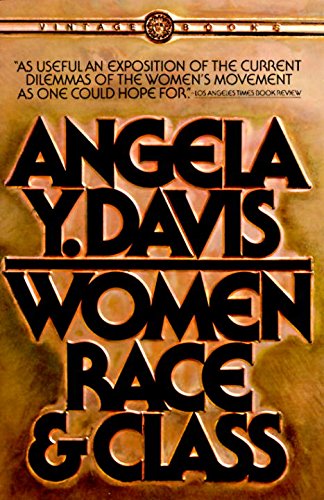
My third Angela Davis book. It’s a historical analysis of the intersections between the anti-racism movement, the women’s rights movement, and the class struggle going from slavery times to modern day (1982).
I think this is the best-written book by Angela Davis I’ve read so far. It’s really easy to tear through reading this. It takes history that I’ve learned in high school and takes a new and interesting lens to it. She’s able to effectively talk about both the ways the black rights and women’s rights movements evolved symbiotically but also had conflict with each other, while also using a Marxist lens to show how class ran through both. It also creates a very good explanation on the relationship between women and working was throughout history in contrast to the mostly unchallenged, simplified “common knowledge” narrative about women being housewives for most of history and then recently entering the workplace.
The last chapter is probably the one I’ll be thinking about the most, because it presents ideas that are really new and radical to me. She argues that it isn’t enough for men to do equal housework to women. She believes that housework sucks so much that as a society we should come together to almost abolish it altogether. She proposes industrializing and socializing housework like childcare, laundry, and meal preparation. You know how there are services where you pay people to come clean your house, prepare you meals, do your laundry, etc.? Well imagine if instead of being for-profit services for those lucky few able to afford them, they were public services available to everyone. I think this chapter is especially relevant now with all the gig economy work going on.
18. Hot Dog Taste Test by Lisa Hanawalt
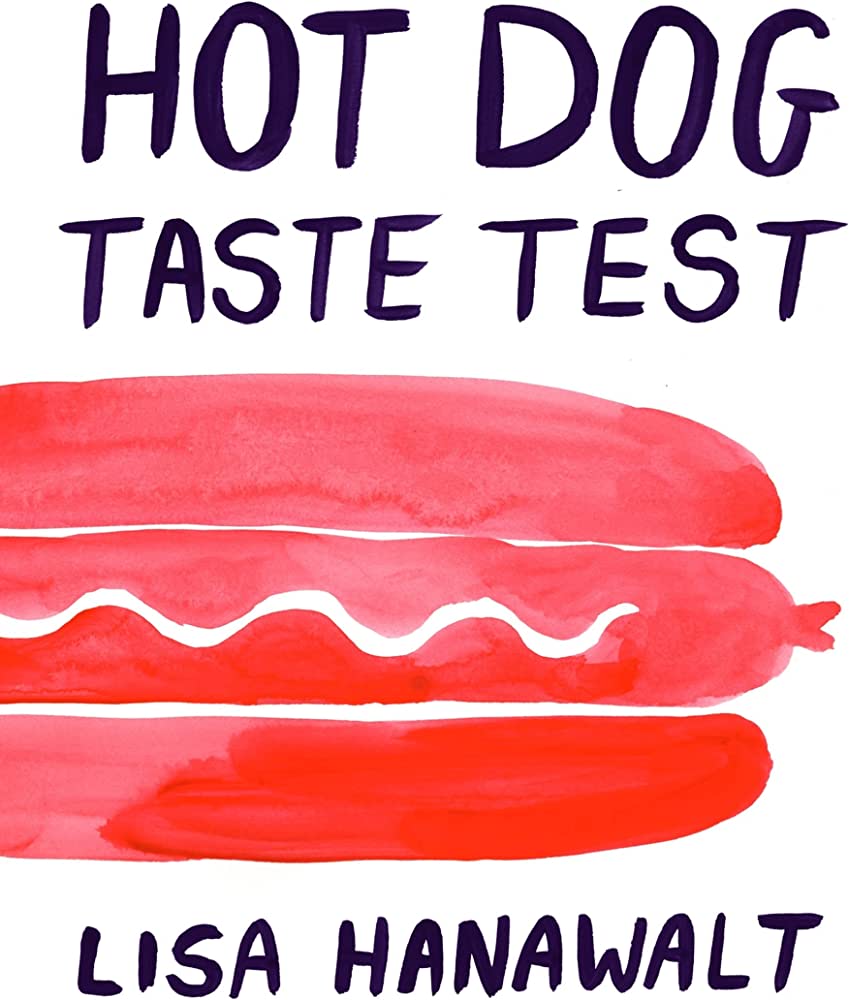
I grabbed this book while browsing the comics section because I noticed it was by the creator of Tuca & Bertie. There’s even proto Tuca & Bertie in this book.
It’s a collection of art diaries and miscellaneous funny comics/illustrations. Mostly about food. I thought it was an alright book. It’s kind of got a weird flow to it that makes it difficult to read more than a little bit at a time. Most of the humor I thought was only mildly amusing but I was fascinated by the art diary format and now I kinda wanna make a book like this too. My favorite part is the really short story about a husband and wife who move into a new house and create a totally self-sufficient life out of houseplants.
19. Road to Nowhere: What Silicon Valley Gets Wrong About the Future of Transportation by Paris Marx
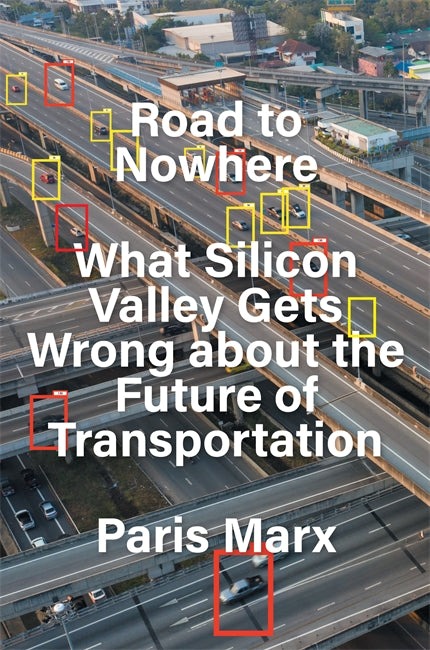
I requested the library buy this book and they did, which makes me feel unbelievably powerful. I wanted to read this book because I listen to the author’s tech industry-critical podcast Tech Won’t Save Us. This book gives the history of modern transportation and how at every turn it’s been manipulated by industry interests. First came the auto industry taking control of our streets and cities, then it was Silicon Valley tech companies with their crazy plans to “disrupt” transportation.
I was especially interested in this book as I’ve become very anti-car in the last few years, and this book goes into detail about how cars have been a disaster for society. It also takes on the sales pitches of the tech industry on how their new product or service will solve transportation. Electric cars, self-driving cars (they’re fiction, you know), automated delivery robots, Uber and Lyft, scooter rentals, etc. It’s all bad, and this book does a good job of explaining why.
20. What the Hell Did I Just Read? by Jason Pargin
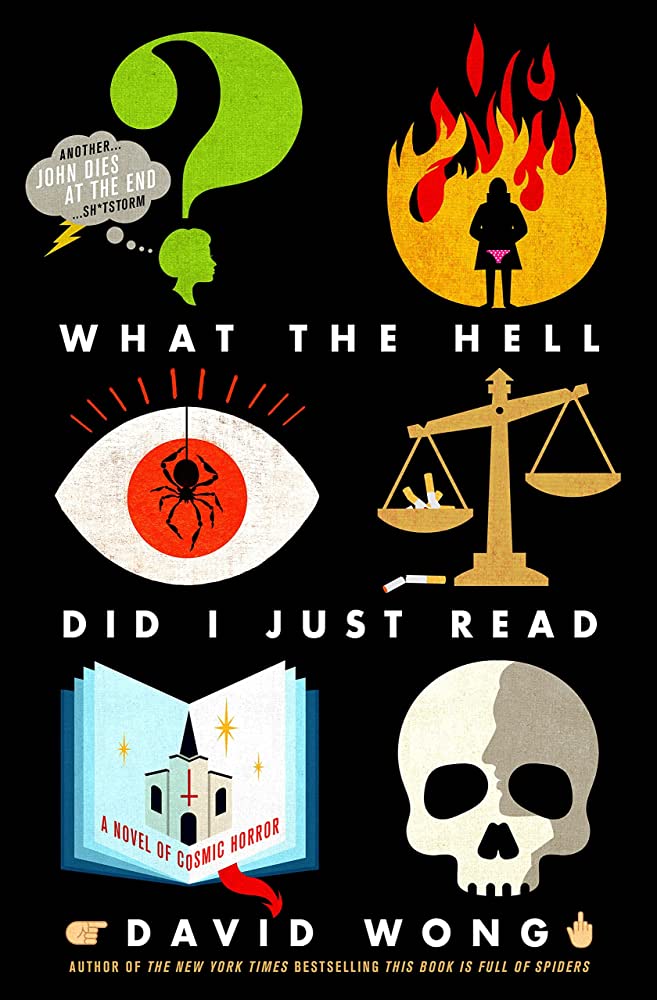
I haven’t read a Jason Pargin book since I was in high school and This Book is Full of Spiders came out. But when I recently found out that he’d written two more of these books, I decided to check out the next one.
In this book, our heroes David, John and Amy look into a missing child case that ends up evolving into a horrific conspiracy of shapeshifting, brain-altering parasites trying to destroy the whole world. This book is just like the last two, where it’s always throwing a million weird and funny supernatural horror concepts at you at a time. I’d completely forgotten how much John Dies at the End influenced me when I wrote “Inner Demons”/Paranormal Emporium (that Bible baseball bat that Weber uses actually comes from John Dies at the End), but it all came flooding back to me. I love the creativity, the vulgarity, the humor, and the midwest grime.
You can definitely taste Pargin’s tenure as a Cracked employee in this book, with lots of random snippets that feel like they were taken out of one of the site’s articles. That kind of bothered me when I read This Book is Full of Spiders, but now that it’s been years since I’ve regularly visited Cracked and everyone I liked from that site has scattered to the four winds, it’s actually pretty nostalgic. I’ll be reading the next book in the series later on this year.